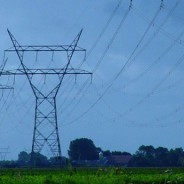GRID Resilience – Planning and T&D Spending

Continuing with the insights inspired by the ScottMadden Energy Industry update, the slide on GRID resilience offers some insights on planning related issues. GRID resilience is essential in resource planning. The layman needs to know that electricity must be balanced at all times, that means supply/demand must be in sync. A surge in demand must automatically be met with a surge in supply or vice versa, no room for delay is allowed. If there is a delay, there will be a potential for an equipment failure and a prolong outage. During storms, the failure of equipment down in the distribution level causes demand losses which can then trigger imbalances in the system and lead to wider disruptions beyond the initial storm damage.
The graph on Weather Related Outages is very telling of the impact on storms. However, before we account for the increase in outage to just climate change, let me note causation and correlation issue. As noted in my previous posting Power Industry Challenges, the age of the distribution system is worse off than the generation resources. Given that knowledge, it is very possible to have increasing outages without a significant increase trend in weather related storms. A storm ten years ago will not be impactful in terms of electricity outage as a storm now given the aging of the poles, transformer, etc.. Investment in Transmission (T) &Distribution (D) is no doubt needed – more so in D than in T.
In terms of a utility, the level of investment is a function of the level of reliability that society wants to pay for. For the individuals who want more reliability, they can either install back up or self-generate on-site. I suspect the answer is to see more distributed generation only in the fact that the average consumer level of reliability would not be cost effective enough for various applications. If the utility were to set the standard of reliability too high, it would be a very regressive policy.
A utility operation is more of a society tool to offer benefits of basic essentials to society which would be out of the reach for many individuals. If utilities started offering Rolls Royce systems, it would cause a regressive rate structure and thereby, negating their very existence of being the tool to enable the mass of society to obtain a basic essential. The commissions need to examine very closely the cost benefits of these items in the T & D filings, and make sure they are balanced with the need of the AVERAGE consumer. With this insight and the business model change we discussed in the beginning of the examination of ScottMadden update, many utilities will likely be much smaller than they were before.
Stay tune for more insights derived from ScottMadden review. Please do consider All Energy Consulting for your consulting needs as I can help giving you a different look into the challenges that lay ahead in the energy world.
Your Energy Consultant,
614-356-0484

